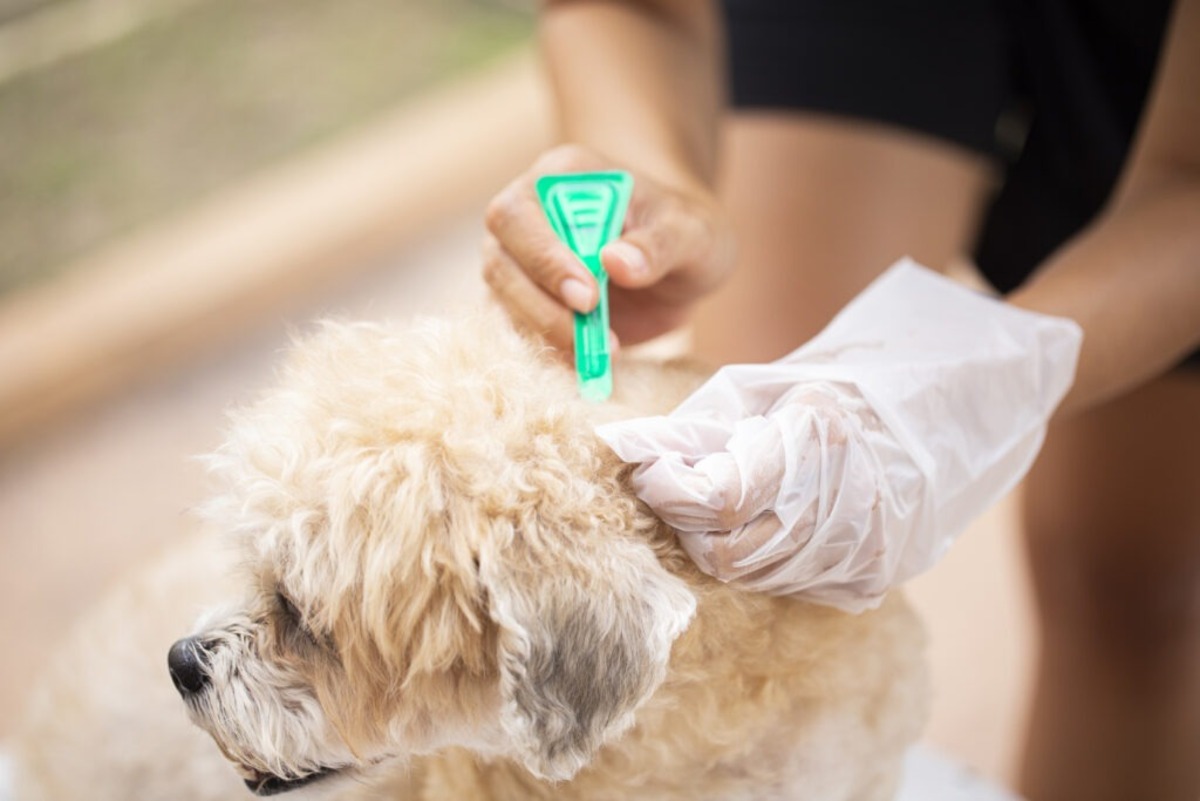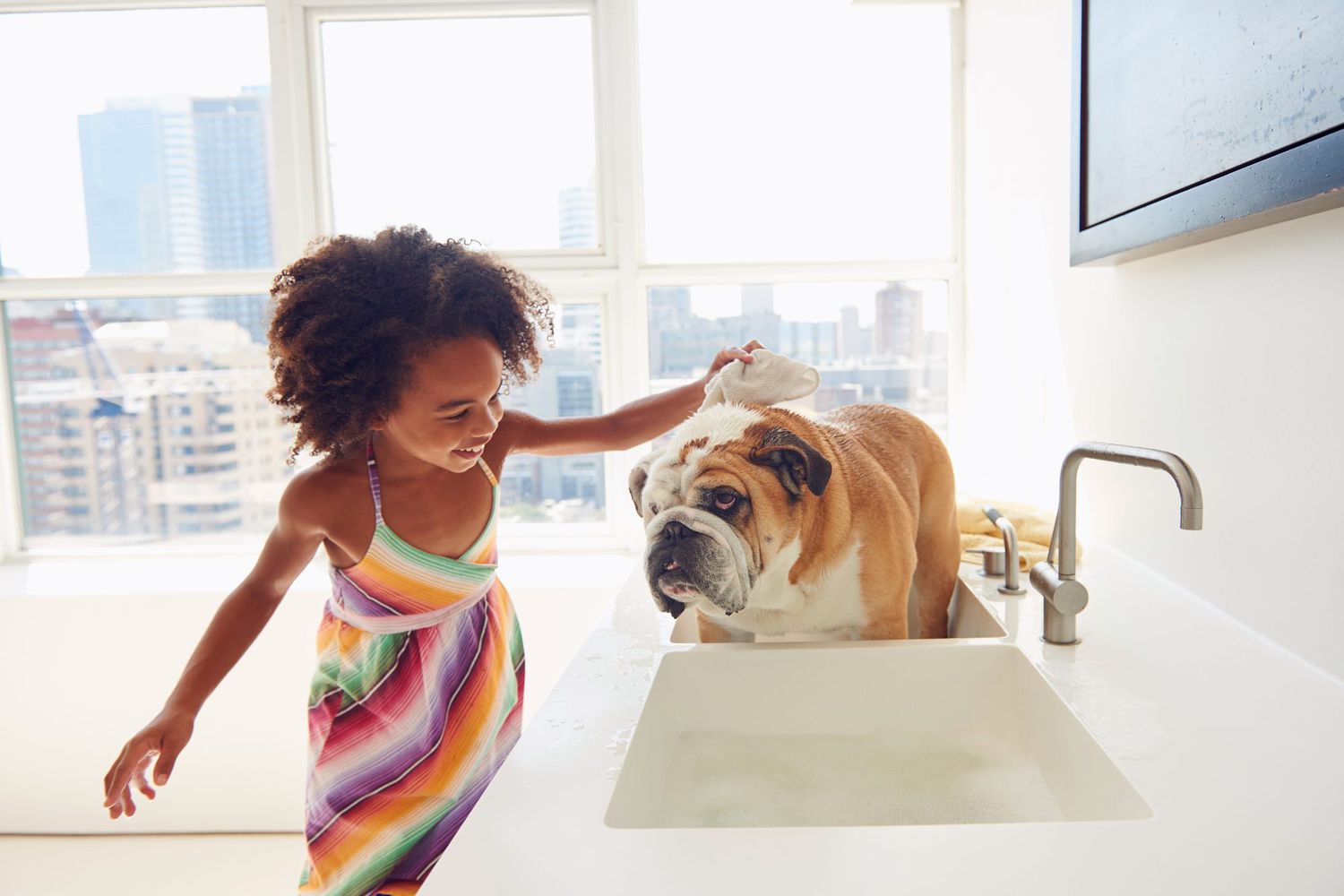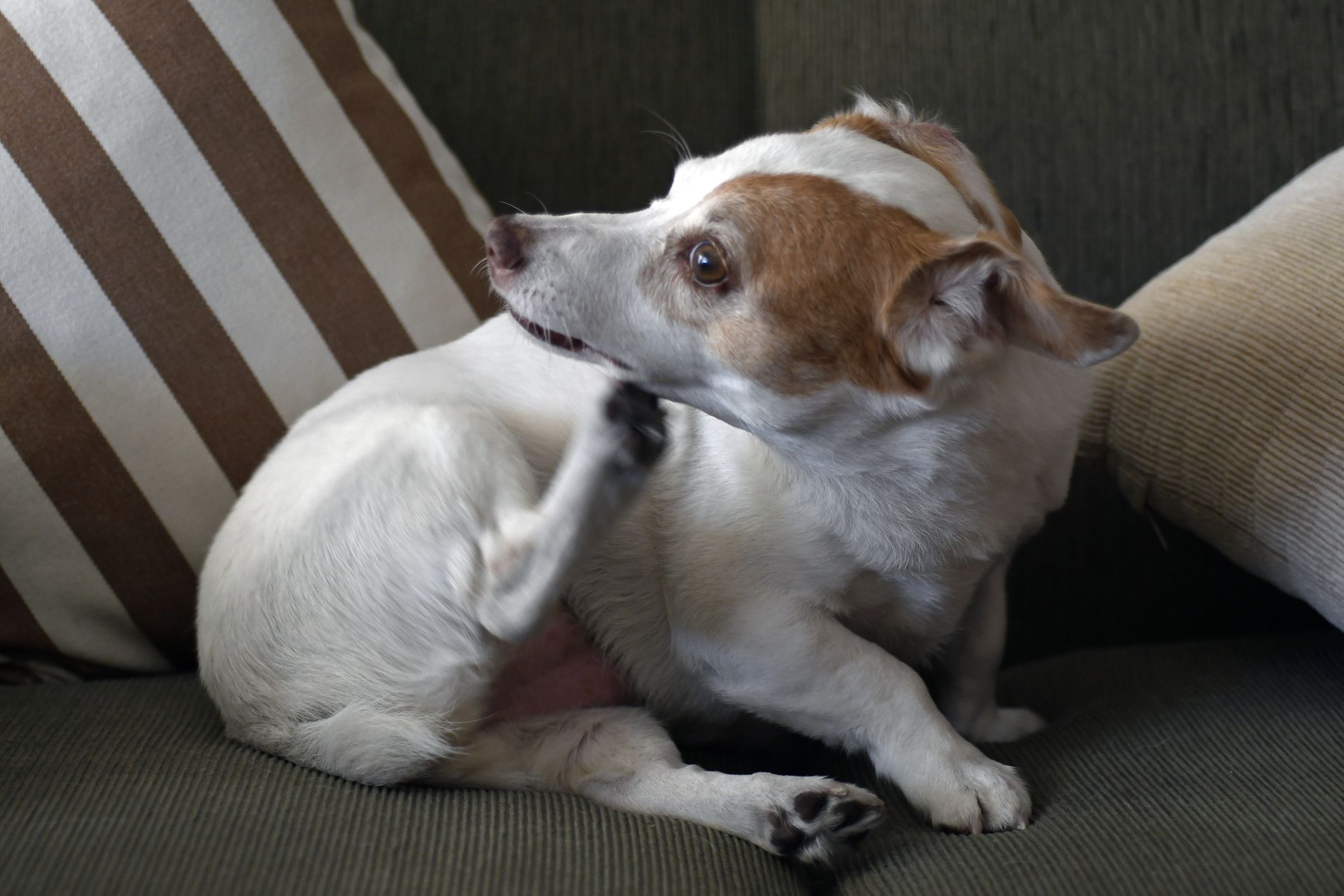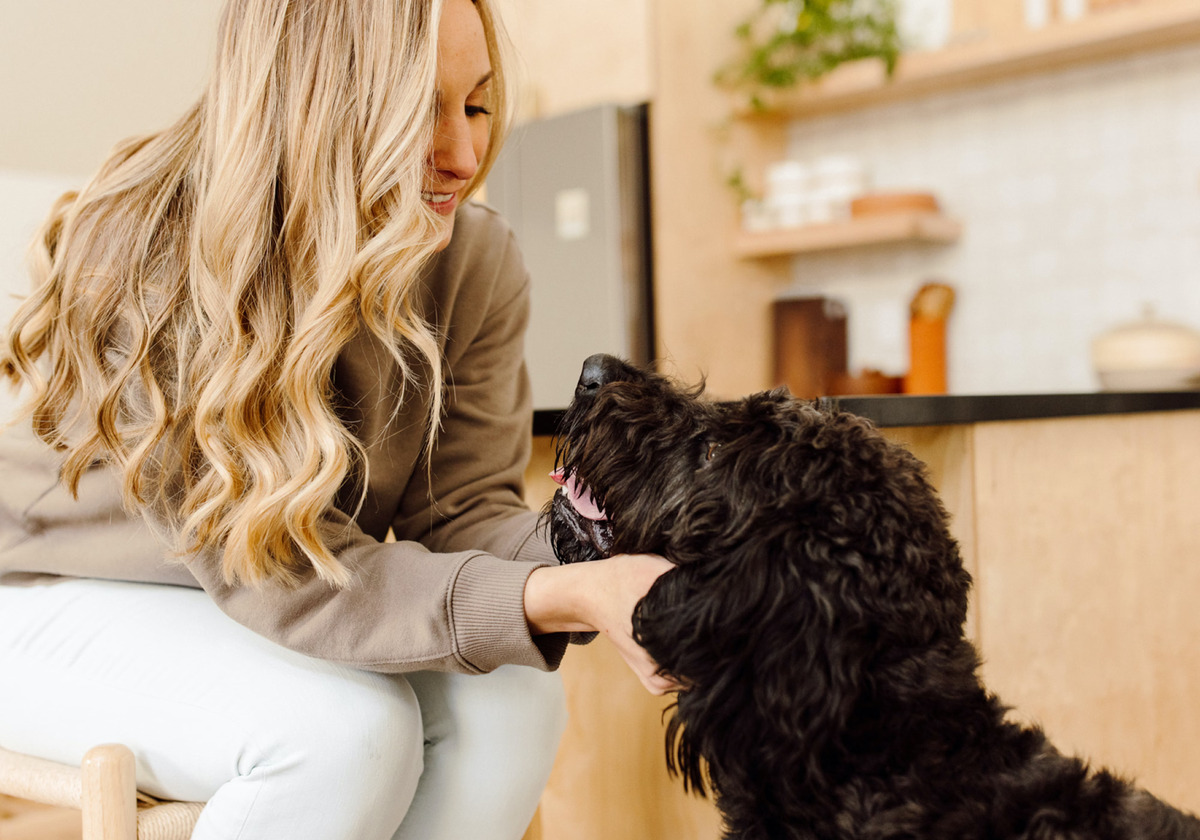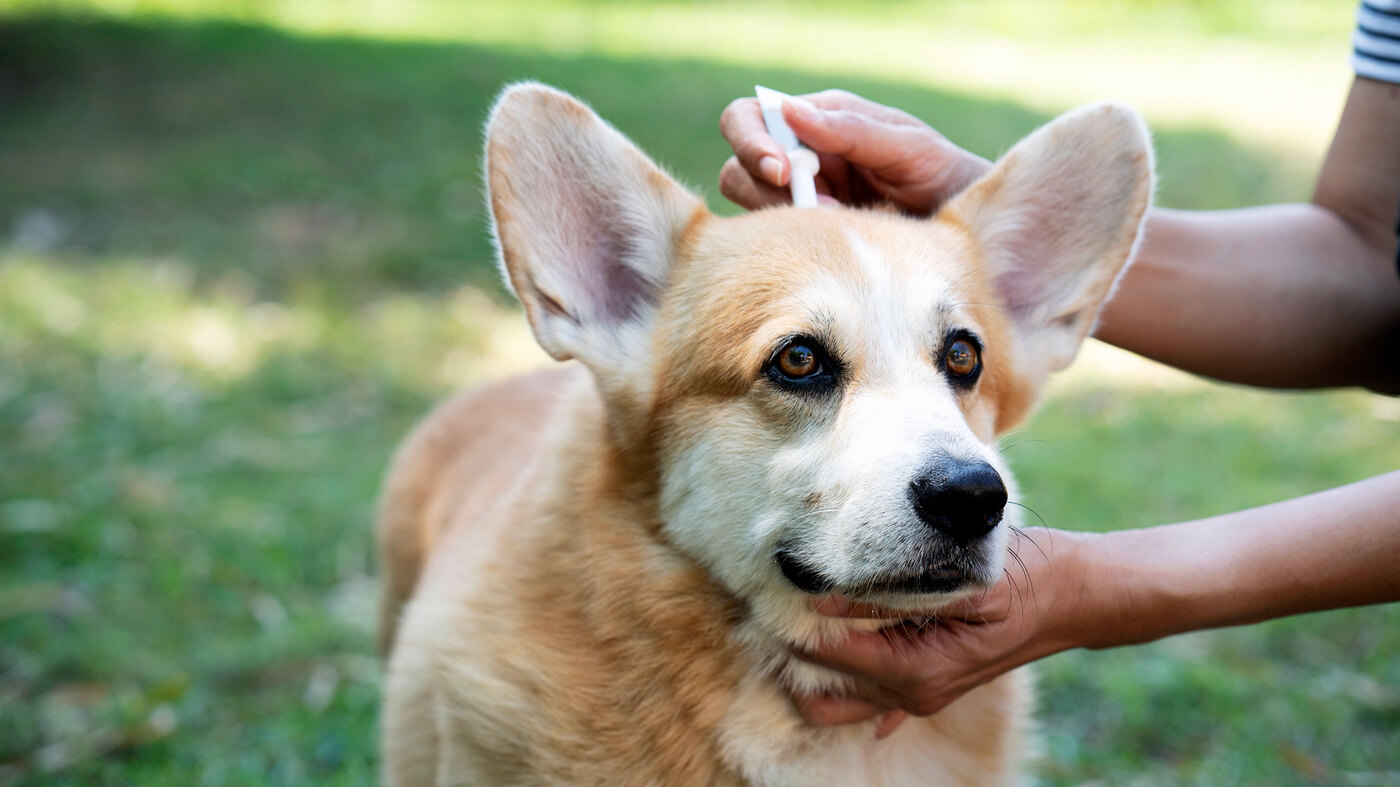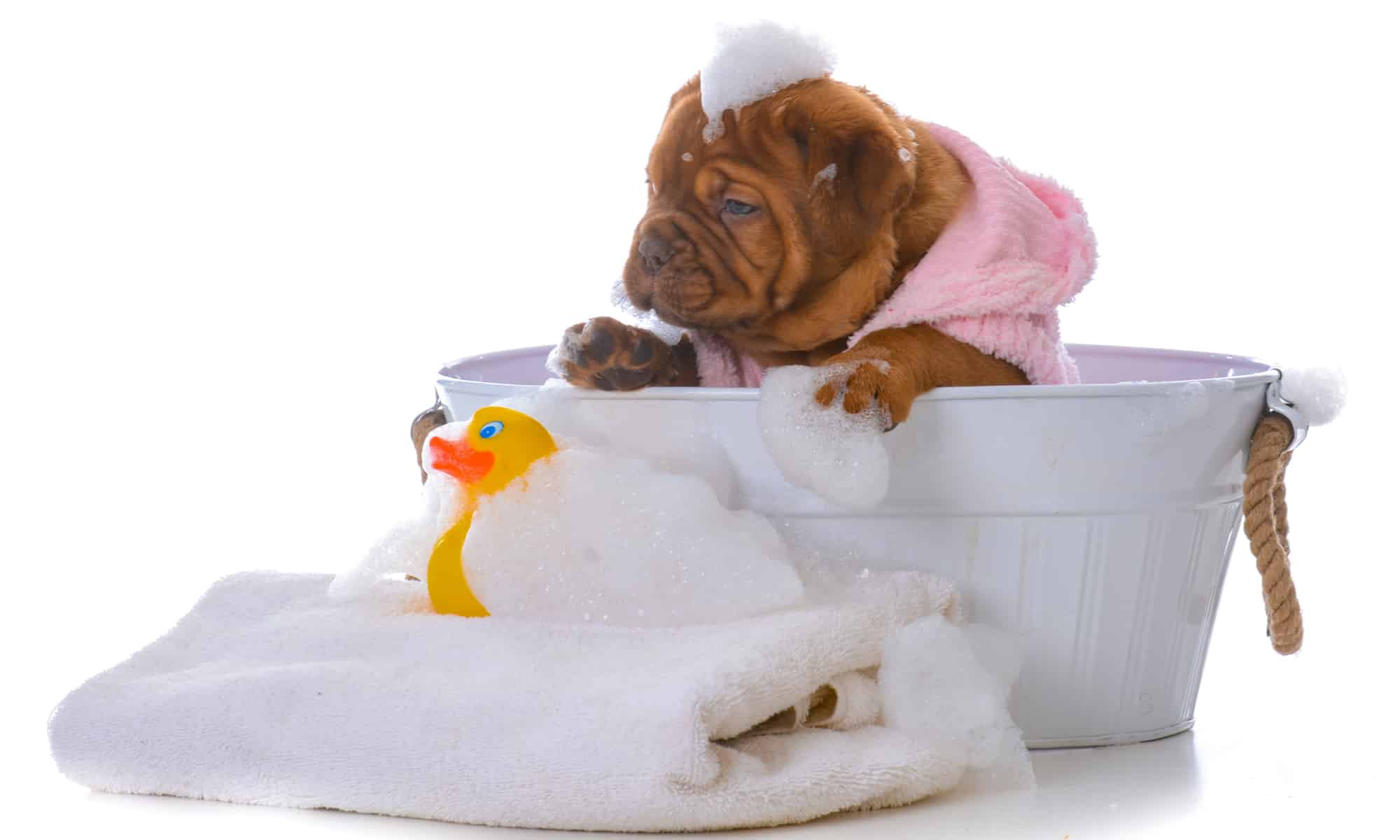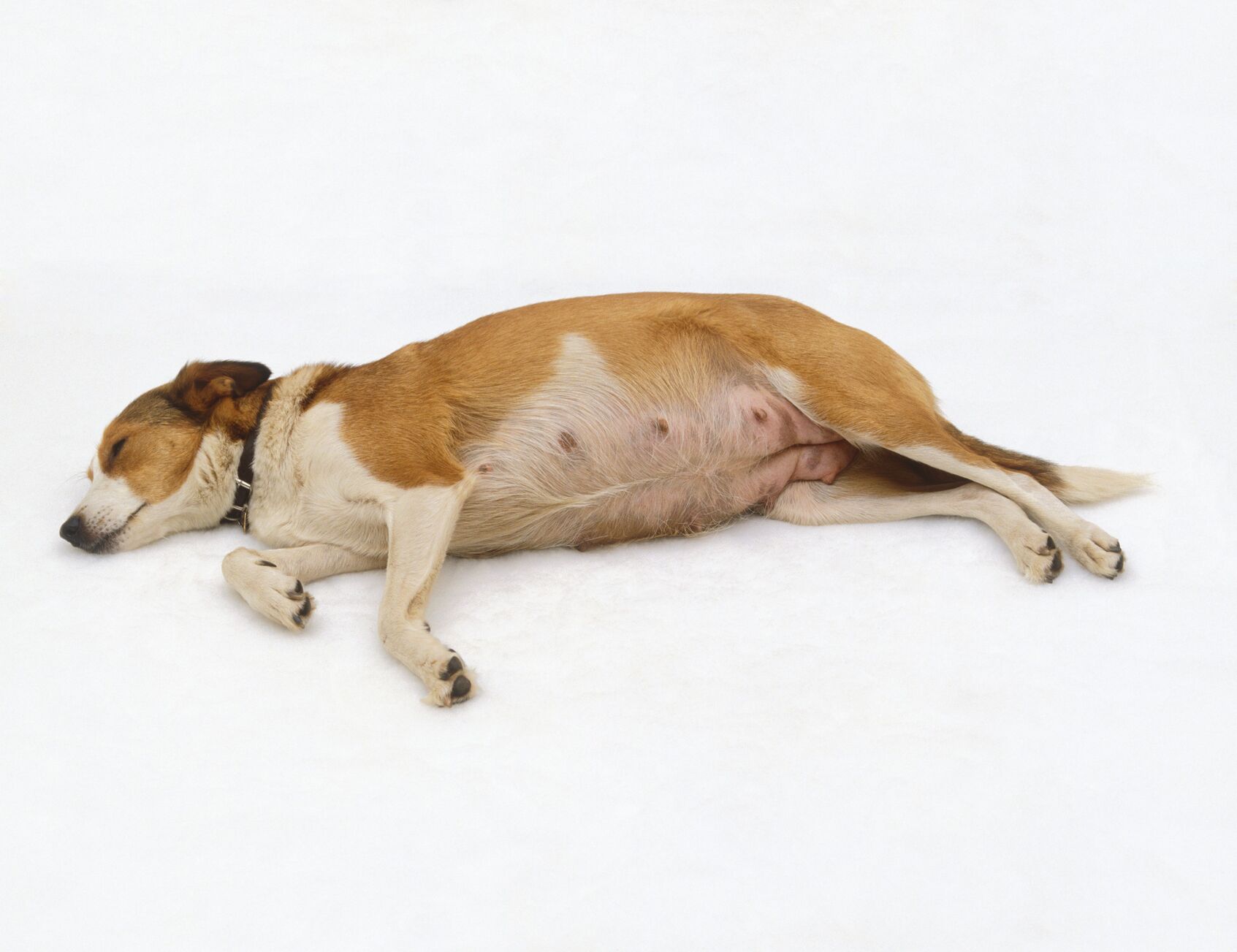Home>Health & Wellness>Common Health Issues>How To Use Baking Soda For Fleas On Dogs


Common Health Issues
How To Use Baking Soda For Fleas On Dogs
Modified: February 21, 2024
Learn how to use baking soda to effectively get rid of fleas on your dog and address common health issues with this natural remedy. Keep your furry friend happy and healthy!
(Many of the links in this article redirect to a specific reviewed product. Your purchase of these products through affiliate links helps to generate commission for Pawsomeoldies.com, at no extra cost. Learn more)
Table of Contents
Introduction
Fleas are a common nuisance for dogs, causing discomfort and potential health issues. These tiny parasites not only irritate our furry friends but can also lead to skin allergies, infections, and even transmit diseases. As responsible pet owners, it's crucial to address flea infestations promptly and effectively to ensure the well-being of our canine companions.
Baking soda, a versatile household staple, has gained attention for its potential to combat fleas on dogs. This natural remedy offers a non-toxic and affordable alternative to commercial flea treatments, making it an appealing option for pet owners seeking gentle yet effective solutions.
In this comprehensive guide, we will explore the benefits of using baking soda for fleas on dogs, along with practical methods for application. By understanding the potential of this common kitchen ingredient, you can take proactive steps to alleviate your dog's flea-related discomfort while minimizing exposure to harsh chemicals.
Understanding the impact of fleas on dogs and the advantages of utilizing baking soda as a natural remedy will empower you to make informed decisions regarding your pet's well-being. Let's delve into the world of flea control and discover how baking soda can be a valuable ally in keeping your dog happy, healthy, and free from pesky parasites.
Read more: How To Use Frontline Flea And Tick For Dogs
Understanding Fleas and Their Impact on Dogs
Fleas are minuscule, wingless parasites that thrive by feeding on the blood of mammals, including dogs. These pesky insects possess remarkable agility, enabling them to swiftly move through the dense fur of their hosts. While their size may be deceiving, the impact of a flea infestation on dogs can be significant and distressing.
Upon infesting a dog, fleas initiate a cycle of discomfort and potential health complications. The incessant itching caused by flea bites can lead to skin irritation, redness, and hair loss, creating a source of immense discomfort for the affected canine. In severe cases, dogs may develop allergic reactions to flea saliva, resulting in dermatitis and intense itching, known as flea allergy dermatitis (FAD).
Beyond the immediate physical discomfort, fleas can also pose serious health risks for dogs. These blood-sucking parasites can transmit various diseases and internal parasites, including tapeworms, bartonellosis, and hemotropic mycoplasmosis. Furthermore, flea infestations can lead to anemia, particularly in young or small dogs, due to the significant blood loss caused by continuous feeding.
The impact of fleas extends beyond the physical realm, as dogs suffering from flea infestations may exhibit behavioral changes. The persistent itching and discomfort can lead to restlessness, irritability, and decreased appetite, affecting the overall well-being and happiness of the afflicted pet.
In addition to the direct impact on dogs, flea infestations can also affect the household environment. Fleas reproduce rapidly, with female fleas laying hundreds of eggs within a short period. These eggs can scatter throughout the home, infesting carpets, bedding, and furniture, leading to a persistent cycle of reinfestation for both dogs and their human companions.
Understanding the pervasive impact of fleas on dogs is crucial for pet owners, as it underscores the importance of proactive flea control measures. By recognizing the potential consequences of flea infestations, pet owners can take decisive steps to protect their dogs from discomfort, health risks, and the broader implications of flea-related challenges.
By gaining insight into the multifaceted impact of fleas on dogs, pet owners can approach flea control with a sense of urgency and purpose, prioritizing the well-being and comfort of their beloved canine companions.
Benefits of Using Baking Soda for Fleas on Dogs
Baking soda, also known as sodium bicarbonate, has garnered attention as a natural and versatile solution for addressing flea infestations on dogs. This common household ingredient offers a range of benefits, making it an appealing choice for pet owners seeking gentle yet effective flea control methods.
1. Non-Toxic Nature:
Baking soda serves as a non-toxic alternative to commercial flea treatments, minimizing the exposure of dogs to potentially harsh chemicals. This natural approach aligns with the growing preference for eco-friendly and pet-safe solutions, providing peace of mind for pet owners concerned about the well-being of their furry companions.
2. Gentle on Skin:
Unlike some chemical-based flea treatments that may cause skin irritation or dryness, baking soda is gentle on the skin, making it suitable for dogs with sensitive skin or existing skin conditions. Its mild nature allows for direct application to the dog's coat and skin without causing undue discomfort, promoting a soothing and calming effect.
Read more: How To Use Tea Tree Oil For Dog Fleas
3. Deodorizing Properties:
In addition to its flea-fighting capabilities, baking soda possesses natural deodorizing properties. When applied to a dog's coat, it can help neutralize odors, leaving the pet with a fresher and more pleasant scent. This dual functionality makes baking soda a multi-purpose solution, addressing both flea infestations and potential odor concerns.
4. Environmental Friendliness:
Baking soda's environmental friendliness extends beyond its impact on dogs, as it poses minimal risk to the broader household environment. Unlike some chemical flea treatments that may leave residues or fumes, baking soda offers a clean and eco-conscious approach to flea control, aligning with sustainable living practices.
5. Cost-Effectiveness:
As a readily available kitchen staple, baking soda presents a cost-effective alternative for managing flea infestations. Its affordability and versatility make it an accessible option for pet owners seeking effective flea control solutions without incurring significant expenses.
By harnessing the benefits of baking soda for flea control, pet owners can address flea infestations proactively and naturally, prioritizing the well-being and comfort of their canine companions. The non-toxic nature, skin-friendly properties, deodorizing capabilities, environmental friendliness, and cost-effectiveness of baking soda collectively position it as a compelling choice for combating fleas on dogs.
How to Use Baking Soda for Fleas on Dogs
When it comes to using baking soda for fleas on dogs, several practical and effective methods can be employed to harness its flea-fighting properties. These approaches are designed to minimize flea infestations while prioritizing the well-being and comfort of canine companions. Here are the key methods for utilizing baking soda in the battle against fleas:
1. Baking Soda Bath:
Begin by preparing a warm bath for your dog. Add a generous amount of baking soda to the bathwater and mix it thoroughly to ensure even distribution. Gently bathe your dog, ensuring that the baking soda solution reaches the skin and coat. Allow the baking soda to sit for a few minutes before rinsing your dog thoroughly. This method can help soothe irritated skin and reduce flea presence on the dog's body.
2. Baking Soda Dry Shampoo:
In situations where a full bath may not be feasible, a dry shampoo approach can be employed. Sprinkle baking soda liberally over your dog's dry coat, ensuring that it reaches the skin. Gently massage the baking soda into the fur, allowing it to sit for several minutes. Use a brush to remove the excess baking soda, effectively eliminating fleas and odors while promoting a fresher coat.
3. Baking Soda Bedding Treatment:
Fleas often infest the bedding and resting areas of dogs, contributing to persistent infestations. To address this, sprinkle baking soda over your dog's bedding, crate, or favorite resting spots. Allow the baking soda to settle for a few hours before thoroughly vacuuming or washing the bedding. This process helps neutralize fleas and their eggs, reducing the likelihood of reinfestation.
4. Baking Soda Household Treatment:
In addition to treating the dog directly, it's essential to address the broader household environment to combat fleas comprehensively. Sprinkling baking soda on carpets, rugs, and upholstery can help eliminate fleas and their larvae. After allowing the baking soda to sit for a few hours, thoroughly vacuum the treated areas to remove the fleas and baking soda residue.
By incorporating these practical methods, pet owners can leverage the flea-fighting potential of baking soda to alleviate flea infestations on dogs effectively. These approaches offer a natural, non-toxic, and affordable means of flea control, aligning with the desire to prioritize the well-being and comfort of canine companions. With consistent application and a proactive approach, baking soda can serve as a valuable ally in the ongoing battle against fleas, promoting a healthier and happier environment for both dogs and their human companions.
Precautions and Considerations
When utilizing baking soda for flea control on dogs, it is essential to consider certain precautions and factors to ensure the safety and well-being of the pets and the household environment. While baking soda is generally regarded as safe and gentle, responsible application and awareness of potential considerations are crucial for achieving optimal results and minimizing any unforeseen issues.
Pet Sensitivities and Allergies
Before initiating any flea control measures involving baking soda, it is important to consider the individual sensitivities and allergies of the dogs. While baking soda is generally well-tolerated, some dogs may exhibit sensitivities to certain topical applications. It is advisable to conduct a patch test on a small area of the dog's skin to assess any adverse reactions before proceeding with broader application. Additionally, consulting with a veterinarian can provide valuable insights into the suitability of using baking soda for flea control, especially for dogs with pre-existing skin conditions or sensitivities.
Avoiding Inhalation and Ingestion
During the application of baking soda, it is crucial to prevent dogs from inhaling or ingesting significant quantities of the substance. While baking soda is non-toxic, excessive inhalation or ingestion can lead to respiratory discomfort or gastrointestinal disturbances in dogs. Pet owners should ensure that the baking soda is applied carefully, avoiding direct exposure to the dog's face and sensitive areas. After application, thorough brushing and cleaning can help minimize the risk of accidental ingestion by the dog.
Environmental Impact
While baking soda is environmentally friendly compared to many chemical flea treatments, it is important to consider its impact on the household environment. Excessive use of baking soda, particularly in confined indoor spaces, may lead to accumulations that require thorough cleaning and removal. Pet owners should exercise moderation in the application of baking soda, especially on surfaces that are frequently accessed by the dog, to maintain a clean and comfortable living environment for both the pets and the household occupants.
Regular Monitoring and Veterinary Guidance
As with any flea control method, regular monitoring of the dog's condition and the effectiveness of the baking soda treatment is essential. Observing the dog for any signs of skin irritation, discomfort, or adverse reactions can prompt timely adjustments to the flea control approach. Additionally, seeking veterinary guidance and advice can provide pet owners with tailored recommendations based on the specific needs and health status of their dogs, ensuring that the use of baking soda aligns with the overall well-being of the pets.
By considering these precautions and factors, pet owners can approach the utilization of baking soda for flea control with attentiveness and responsibility, promoting a safe and effective approach to alleviating flea infestations on dogs. With a mindful and informed application of baking soda, pet owners can prioritize the comfort and health of their canine companions while addressing flea-related challenges in a proactive and conscientious manner.
Conclusion
In conclusion, the utilization of baking soda for flea control on dogs offers a compelling blend of natural efficacy, pet-friendly properties, and affordability. By harnessing the benefits of baking soda, pet owners can address flea infestations proactively, prioritizing the well-being and comfort of their beloved canine companions. The non-toxic nature, skin-friendly properties, deodorizing capabilities, environmental friendliness, and cost-effectiveness of baking soda collectively position it as a valuable ally in the ongoing battle against fleas.
The multifaceted impact of fleas on dogs underscores the urgency of proactive flea control measures. Fleas not only cause discomfort and skin irritation but also pose health risks and behavioral disturbances for dogs. Furthermore, the potential for household infestation amplifies the need for comprehensive flea control strategies. Understanding the pervasive impact of fleas on dogs empowers pet owners to take decisive steps in protecting their pets from the challenges posed by these persistent parasites.
By incorporating practical methods such as baking soda baths, dry shampoo applications, bedding treatments, and household environmental control, pet owners can effectively minimize flea infestations while promoting a healthier and happier environment for both dogs and their human companions. These approaches offer a natural, non-toxic, and affordable means of flea control, aligning with the desire to prioritize the well-being and comfort of canine companions.
However, it is essential for pet owners to consider precautions and factors when using baking soda for flea control, including pet sensitivities and allergies, avoiding inhalation and ingestion, and environmental impact. Responsible application and awareness of these considerations are crucial for achieving optimal results and minimizing any unforeseen issues.
In essence, the utilization of baking soda for flea control on dogs represents a harmonious convergence of natural remedies, pet well-being, and environmental consciousness. By embracing the potential of baking soda as a gentle yet effective flea control solution, pet owners can navigate the challenges posed by fleas with confidence and compassion, fostering a healthier and more comfortable environment for their cherished canine companions.

